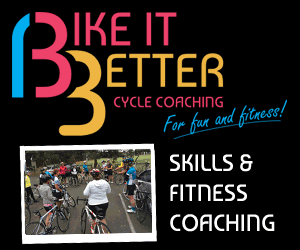After six years of annual tests of bike lights, we’re confident we know what makes a good bike light. Simon Vincett reports
- Highly visible output, both head-on and angled, so that people can see you
- Excellent water resistance
- Durability for regular use and the occasional tumble
- Ease of operation and not too many modes to scroll through
- Ease of mounting and removing
- Convenience in charging or changing the batteries
- Secure permanent attachment to your bike or compactness if you take it with you when you’re parked on the street
Did you know?
- Flashing lights are more visible than steady lights. Steady lights used to see by should be supplemented with flashing lights so that others see you.
- As batteries run down many lights become less visible. Clever lights tell you when the battery is low.
- Bike riders are most effectively seen by other road users when they have lights at handlebar height. That goes for front and rear lights.
- We don’t recommend helmet-mounted lights because they dazzle other riders.
- Beware of high-powered lights blinding other riders and road users; there’s a fine line between a strong light and being anti-social.
Tips
“The best dynamo lights for street use are about 200–400 lumens. Although Supernova do their E3 Triple, which is 800, they recommend “not for street use”.” Australian Cycling Forums
“Removable lights can be easily re-mounted askew.” Bill at Human Powered Cycles
“Large diametre handlebars have trouble with many lights brackets.” Flying Dutch
“All rear lights I have tried fail in the rain occasionally (if they are too close to the rear wheel – I think). I have solved this by having four of them. Also, sealing them up with electrical tape seems to work in all but the heaviest of rain.” Australian Cycling Forums
“Lights that take standard batteries are better, especially if you can use rechargables.” Human Powered Cycles
“In the city I don’t think you need a light stronger than a half watt.” Nick at Cheeky Transport
“If the light output is important to you, make sure you use the same light intensity measurement for the units you are considering.” Human Powered Cycles
For the best bike lights, check the results from our annual tests:
Ride On content is editorially independent, but is supported financially by members of Bicycle Network. If you enjoy our articles and want to support the future publication of high-quality content, please consider helping out by becoming a member.



I have been fooled several times now by bike light reviews that recommend lights based on unrealistic visibility tests. It is important not only for a driver to notice a bike at night but for the driver to be able to successfully estimate the speed and the location of a bike. Flashing front lights make it very difficult to accurately judge how far away a bike is, the speed it is traveling at, where it is as it passes you and what it is doing when it changes direction. It is important to realise that you need to be clearly visible in car rear vision mirrors as well as to on coming traffic. As a regular cycle commuter and a driver these things are very important to me. I will concede, in heavy, slow moving traffic, a normal steady light can get lost amongst all the headlights. Here, I use flash mode on my light.
Many cyclist ride on bike tracks and poorly lit roads. I would like to see a review based on how effective lights are at allowing the rider to actually see where they are going. Things like not only brightness but spread and shape of the beam. How far ahead can you see, etc. If a light is good enough to confidently ride the Gardiner’s Creek trail at 30kph or more at night, for instance, then, I imagine, it is more than bright enough to pass the above tests. The bonus with a good riding light like that is, on roads there is a pool of light in front of you that divers can see. This can increase your safety zone.
I’m a frequent night ride (usually the only time I get during a week day) I run 3 tail lights, 1 pencil type light on the helmet, a silicon one attached to the right side read stay, and a super bright one on my saddle bag, all of them I make flash and at different speeds so I created a mess of flashing lights. At the front I run a small 1watt (flashing) and a 900 lumens (constant) both attached to the hanlde bars than I wear a 120 lumens on my helmet for, as Felix says, traffic entering from the side. The 900 lights up the road so much it picks up small depressions which you would only pick up on a bright day.